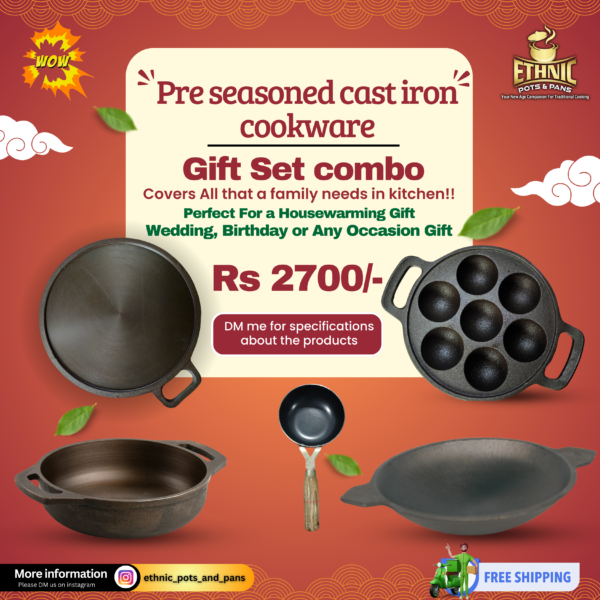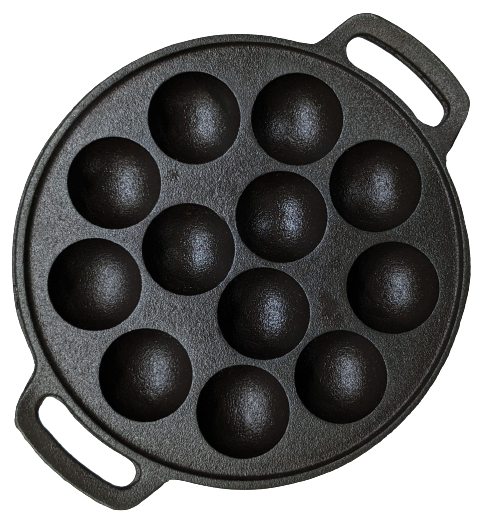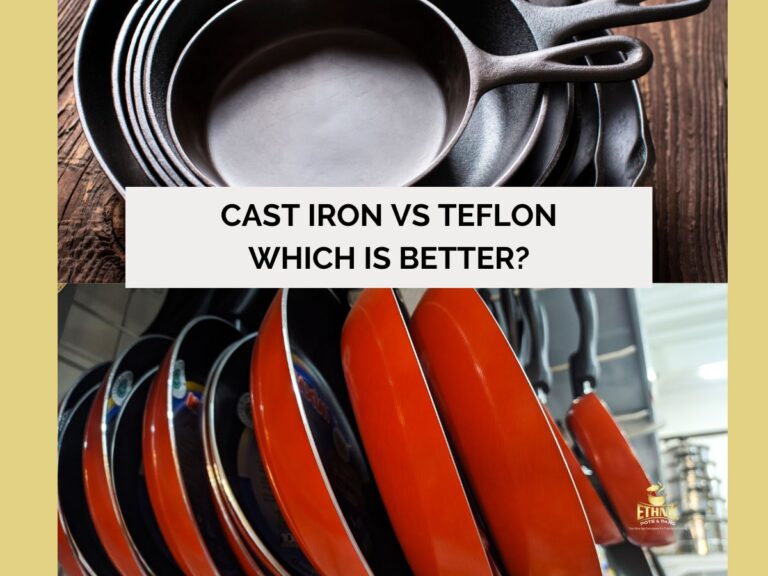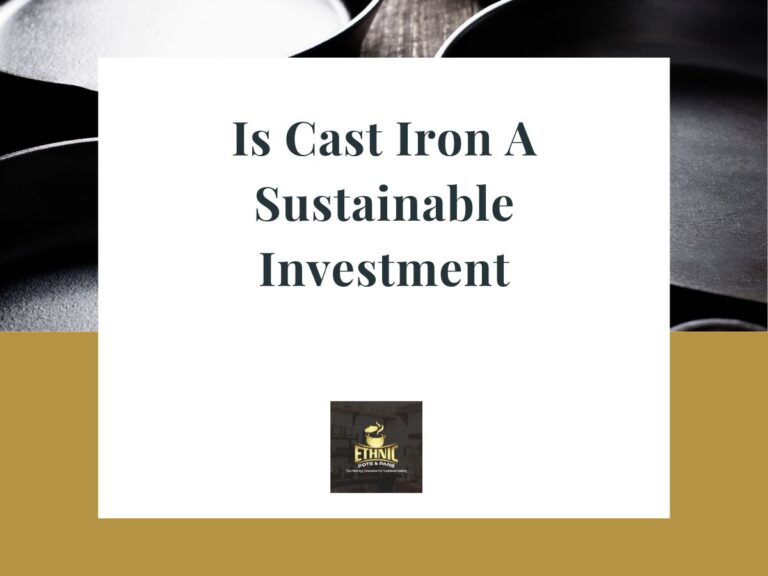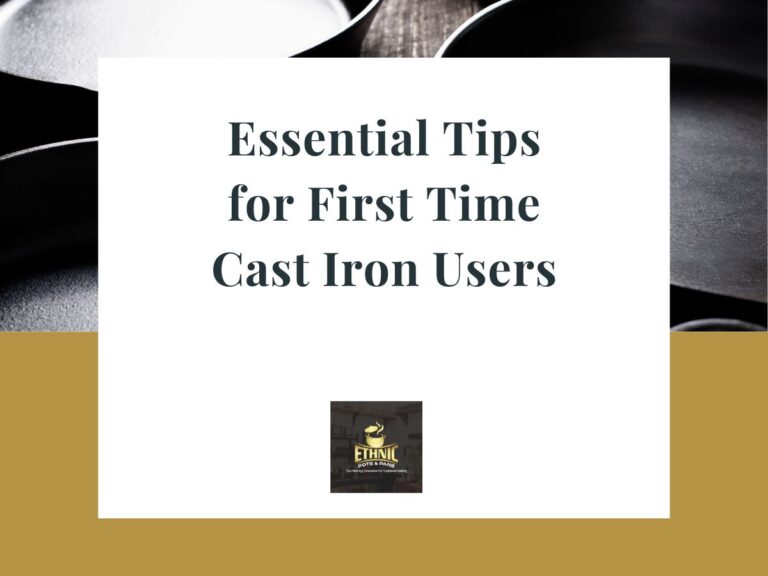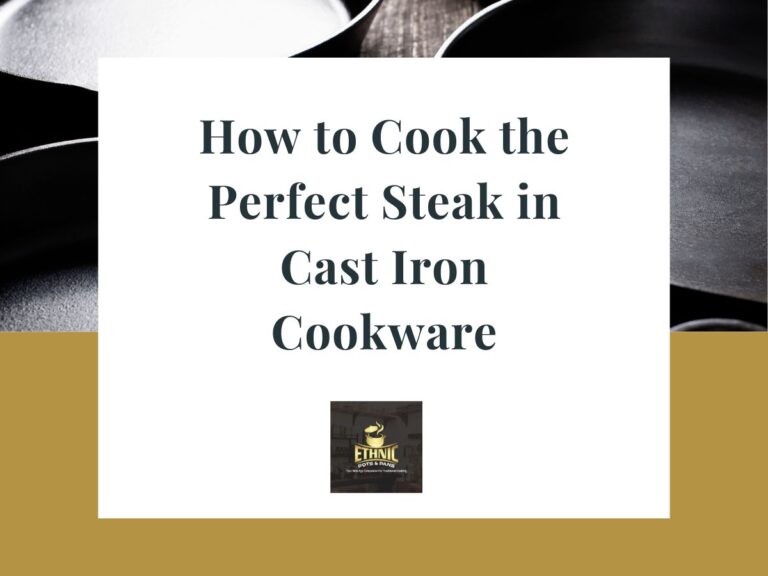Aapams, also known as Hoppers, are a beloved South Indian dish, known for their soft, spongy centers and crispy, lace-like edges. Traditionally made with fermented rice batter, aapams are a perfect accompaniment to both sweet and savory dishes. The secret to making the best aapams lies not only in the batter but also in the cookware used. Cooking aapams in a cast iron aapam pan gives them an authentic texture and flavor. At Ethnic Pots and Pans, we offer high-quality cast iron aapam pans that are designed to give you perfectly cooked, fluffy aapams every time.
In this guide, we’ll take you through the step-by-step process of making fluffy aapams, starting from preparing the batter to cooking them to perfection in a cast iron aapam pan.
Why Use a Cast Iron Aapam Pan?
Before we get into the recipe, let’s discuss why a cast iron aapam pan is the best choice for making aapams:
– Even Heat Distribution: Cast iron evenly distributes heat across the pan, ensuring that the aapam cooks uniformly, with a crispy edge and soft center.
– Superior Heat Retention: Cast iron retains heat better than other materials, allowing for a consistent cooking temperature.
– Non-Stick Properties: With proper seasoning, a cast iron aapam pan develops a natural non-stick surface, making it easier to cook delicate foods like aapams without them sticking.
– Durability: Cast iron cookware is built to last, and with proper care, it can be passed down through generations, making it a great investment.
At Ethnic Pots and Pans, our cast iron aapam pans are pre-seasoned and ready to use, giving you the perfect surface for cooking traditional South Indian aapams.
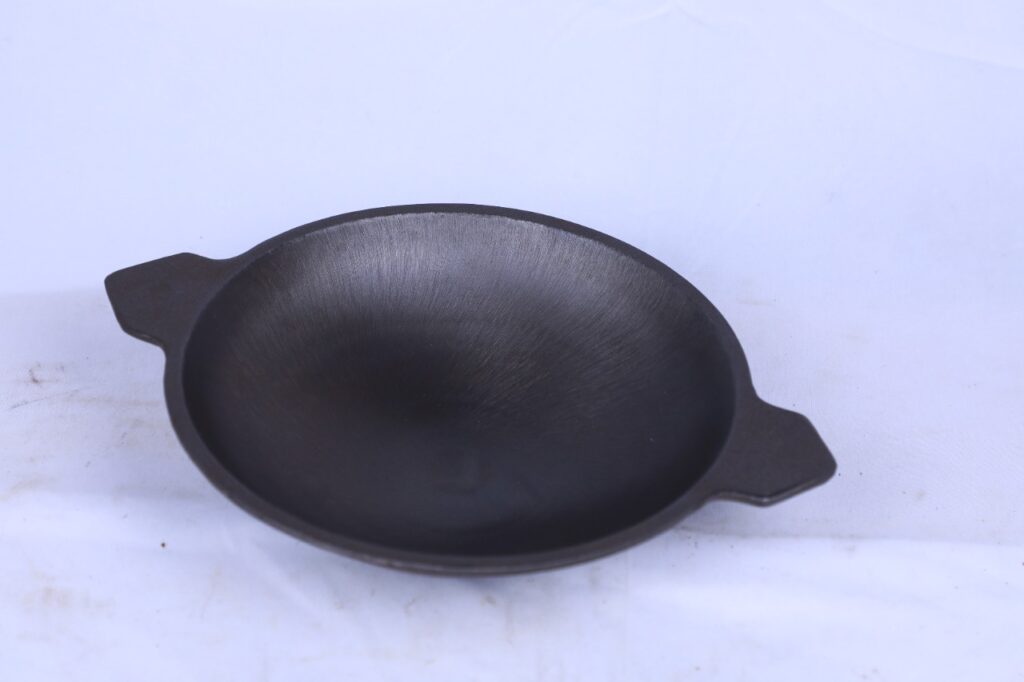
Pre-seasoned cast iron aapam pan/hopper’s pan
Pre-seasoned cast iron Aapam pan/Hopper’s pan. Glass Lid available
Suggested Reading: Slow Cooking with Cast Iron: Does It Work?
How to Make Fluffy Aapams in a Cast Iron Aapam Pan
Ingredients for Aapam Batter
The first step to making fluffy aapams is preparing the batter. Here’s what you’ll need:
– 1 ½ cups raw rice (preferably idli rice or parboiled rice)
– ½ cup grated coconut (fresh or desiccated)
– 1 tablespoon cooked rice
– ½ teaspoon fenugreek seeds
– ½ teaspoon salt (or to taste)
– 1 teaspoon sugar
– 1 tablespoon yeast (optional, for faster fermentation)
– Water (as needed)
Preparing the Aapam Batter
1. Soak the Ingredients:
– Rinse the raw rice and fenugreek seeds under running water. Soak them in water for about 4-6 hours. If you plan to make the batter in the evening, you can soak it in the morning.
2. Grind the Batter:
– Drain the soaked rice and fenugreek seeds and add them to a blender along with the grated coconut and cooked rice. Add water gradually and blend until you get a smooth batter. The batter should have a slightly thick consistency.
3. Ferment the Batter:
– Pour the batter into a large bowl, ensuring there’s enough space for the batter to rise during fermentation. Add salt and sugar, and if you’re using yeast, dissolve it in warm water and mix it into the batter.
– Cover the bowl with a lid and let the batter ferment for 8-10 hours, preferably overnight. The batter should rise and become light and airy.
Watch the process here:
Procedure
Now that your batter is ready, it’s time to cook the aapams. Follow these steps for perfectly fluffy aapams in your Ethnic Pots and Pans Cast Iron Aapam Pan:
1. Preheat the Cast Iron Aapam Pan
– Place the cast iron aapam pan on medium heat and allow it to warm up for a few minutes. The pan should be hot enough for the batter to spread evenly, but not too hot that it burns the aapam.
– Pro Tip: Lightly brush the pan with oil before pouring the batter. Although a well-seasoned cast iron pan doesn’t need much oil, a light coat ensures the edges of the aapam are extra crispy.
2. Pour the Batter
– Once the pan is heated, ladle a spoonful of batter into the center of the aapam pan. Hold the handles and gently swirl the pan in a circular motion, allowing the batter to spread outward and create thin edges. The center of the aapam will be thicker and softer, while the edges will be thin and crispy.
– Pro Tip: The key to a perfectly fluffy aapam is not to press down on the batter. Let the batter spread naturally and fill the pan.
3. Cover and Cook
– Cover the aapam pan with a lid and allow the aapam to cook for 2-3 minutes. The steam trapped inside will help cook the center of the aapam, making it soft and fluffy.
– You’ll know the aapam is ready when the edges turn golden brown, and the center is cooked through with tiny bubbles.
Watch the review here:
4. Serve the Aapams
– Once the aapam is cooked, use a spatula to gently lift it from the pan. Serve the aapams hot with coconut milk, vegetable stew, or any curry of your choice.
– Pro Tip: For extra flavor, brush the edges of the aapam with a little ghee just before serving.
-
Beginners Combo/ Gift Set Combo – Pre-seasoned cast iron Combo
Original price was: ₹4,999.00.₹2,700.00Current price is: ₹2,700.00. -
Best Cooking Essentials Combo
Original price was: ₹5,999.00.₹2,999.00Current price is: ₹2,999.00. -
Pre-seasoned 12 Pits flat bottom paniyaaram pan
₹1,500.00 – ₹1,700.00
Tips for Perfect Aapams
1. Fermentation is Key: The fluffiness of the aapam depends largely on the fermentation of the batter. Make sure to give the batter enough time to rise and become airy.
2. Heat Control: Maintaining the right heat is crucial. If the pan is too hot, the batter will cook too quickly, and the aapams won’t develop their signature soft center. Start with medium heat and adjust as needed.
3. Use Fresh Batter: Aapams are best made with fresh, well-fermented batter. While you can refrigerate leftover batter, fresh batter yields the fluffiest results.
Health Benefits of Cast Iron Cookware
At Ethnic Pots and Pans, we emphasize the use of cast iron cookware not only for its cooking benefits but also for its health advantages:
– Natural Non-Stick Surface: When seasoned properly, cast iron cookware develops a natural non-stick surface, eliminating the need for harmful non-stick chemicals.
– Adds Iron to Your Diet: Cooking in cast iron pans increases the iron content in food, making it beneficial for those with iron deficiencies.
– Durable and Eco-Friendly: Cast iron cookware is built to last, reducing the need for frequent replacements. It’s also a great way to reduce your carbon footprint by avoiding disposable or short-lived cookware.
Suggested Reading: Best Diwali Gifts for Culinary Lovers
Making fluffy aapams is an art, and using a cast iron aapam pan from Ethnic Pots and Pans ensures that your aapams turn out perfect every time. From its heat retention to its even cooking, cast iron enhances the texture and flavor of traditional South Indian dishes like aapams.
By following the steps in this guide, you’ll master the technique of making aapams with soft, spongy centers and crispy edges. Pair them with a delicious curry or a bowl of coconut milk, and you have a wholesome, satisfying meal.
Whether you’re an experienced cook or just starting out, investing in a quality cast iron aapam pan is essential for bringing out the best in your South Indian cooking. With proper care, your cast iron pan will serve you for years, improving with each use. So, get your Ethnic Pots and Pans Cast Iron Aapam Pan today and start making fluffy, golden-brown aapams at home!

